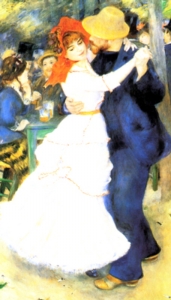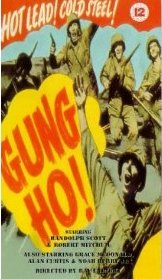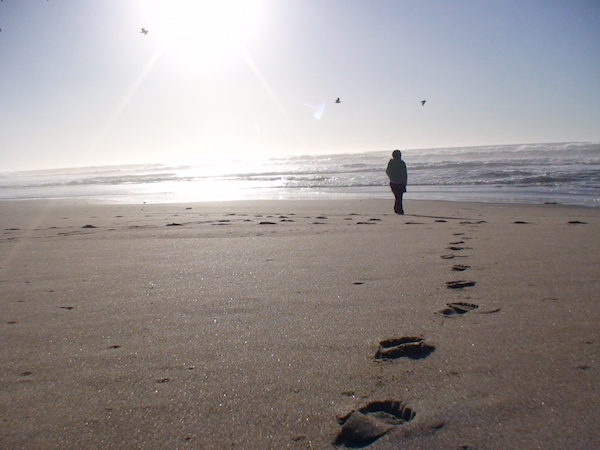 In academic prose and especially college text books, there’s often the statement “the proof is left as an exercise to the reader.”
In academic prose and especially college text books, there’s often the statement “the proof is left as an exercise to the reader.”
This blog entry was inspired by a Huffington Post article by Deepak Chopra. I hope it inspires thought and some mental exercise.
Richard Dawkins has written a number of influential books. He invented the term “meme”. Now he’s been taking on God as his adversary, or more accurately the God concept. It is certainly an ambitious project. Deepak Chopra and Richard Dawkins are both bloggers on the Huffington Post, and thus the battleground is set. But I found the opening salvo of this post to be very interesting.
Ultimately, Richard Dawkins can fight with religion all he wants and it will be only a sideshow. He is a color commentator sitting in the bleachers, not a player in the game. Skepticism offers critiques, not discoveries. Ironically, this is a shared fate with religion, which has ceased to play a progressive and vital role in modern society. […] The two are locked in a sterile embrace.[…]
This quote was read to me, and it was on my to-do list to blog about it for some time. But peering at the logged comments, I was amazed at the amount of passionate vituperative responses that Dr. Chopra’s entries had inspired in the comments section of several of his entries. Dare I step into the crossfire?
Sterile Science and Sterile Religion are apparently at war, and non-sterile passionate lively boisterous humans are picking up the ammunition and philosophical hand-grenades to toss at one another. But maybe dialog is really what we need?
In any case, I don’t have much sympathy for the ideas of a “God Delusion”. It represents a deeply uninformed view that Deepak rightly protests. It is a viewpoint that holds many of our best and brightest human beings in bondage. Science hit a wall some time ago in it’s grand project to create a theory-for-everything. But the wall was hit in the deepest philosophical underpinnings of science in ways that did not spread to the rank and file researchers. It is why there are so many books about Quantum Physics these days. The greatest physical Scientists of our times have always also been great Mystics. Einstein. Newton. For they were delving in to the mysteries themselves to find answers.
But what of our Spiritual Scientists? Like Jesus, Buddha, Mohammed? Perhaps the Spiritual truths are much more fundamental and dangerous than the physical truths. We think we can hold physical truth in our hands. But what is matter? What is time? What is energy? If we skip those questions, and say, well, look, you know what matter is. It’s, like, you know. That bit of dirt. And this bowling ball.
True, we do share a physical experience. At least it seems to be the case. But as far as we can tell, we also share an internal experience. A “subjective” experience. For the mystic, for the one experiencing the divine or the sublime, the question of whether there is a God or not is an empty question. Like Deepak says, the people engaging in such debates are really like the people in the bleachers.
If you are seeking a “science-backed” truth to God, then you may never find it (although, alternate views are emerging in Science too). An open-minded spiritual journey, however, may provide different results altogether. Whether today’s modern mystic explores his own spirit and God through Christianity and the ministry for youth; or through Hinduism and its nuanced, multi-sect teachings; or through the Zen so often expounded by Japanese Buddhists; the path may seem different, but the end of the journey culminates at a single point for all.
An observer of a dance might debate the value of dancing. They might fight. But it’s much more interesting to be dancing than to talk about it. Where are you in the dance? The answer is left as an exercise to the reader.
 Ken Blanchard and Sheldon Bowles wrote a page turner with their book Gung Ho! A book about leadership, the lesson was delivered in the form of a story where a manager is tasked with turning around a failing plant and instead her own ideas of leadership are turned around by a maverick manager of one of the teams at this plant.
Ken Blanchard and Sheldon Bowles wrote a page turner with their book Gung Ho! A book about leadership, the lesson was delivered in the form of a story where a manager is tasked with turning around a failing plant and instead her own ideas of leadership are turned around by a maverick manager of one of the teams at this plant.
 A small holiday moment is captured here. The wind blowing gently but firmly in the sun descending over the Pacific from our view at Carmel-by-the-sea. The steps ahead, they’ve usually been tread before, and these certainly have. The evidence is plain, if only for a moment. Soon it will be washed clean from the sand. But the footprints in the mind, those take longer to fade, if ever.
A small holiday moment is captured here. The wind blowing gently but firmly in the sun descending over the Pacific from our view at Carmel-by-the-sea. The steps ahead, they’ve usually been tread before, and these certainly have. The evidence is plain, if only for a moment. Soon it will be washed clean from the sand. But the footprints in the mind, those take longer to fade, if ever. The basic idea of the book is that our personal stories are our problems. We need to get rid of them, rewrite them, make better ones. Perhaps it really all just comes down to a basic philosophical realization that has yet to be fully comprehended while in reality it is also at the heart of many of the spiritual lessons delivered by the great masters over the millenia. The famous painting by Magritte of a pipe with the words below in French that say “Ceci n’est pas une pipe.” Or, “This is not a pipe”. Others have expressed this as “The Map is not the Territory.”
The basic idea of the book is that our personal stories are our problems. We need to get rid of them, rewrite them, make better ones. Perhaps it really all just comes down to a basic philosophical realization that has yet to be fully comprehended while in reality it is also at the heart of many of the spiritual lessons delivered by the great masters over the millenia. The famous painting by Magritte of a pipe with the words below in French that say “Ceci n’est pas une pipe.” Or, “This is not a pipe”. Others have expressed this as “The Map is not the Territory.” In academic prose and especially college text books, there’s often the statement “the proof is left as an exercise to the reader.”
In academic prose and especially college text books, there’s often the statement “the proof is left as an exercise to the reader.”